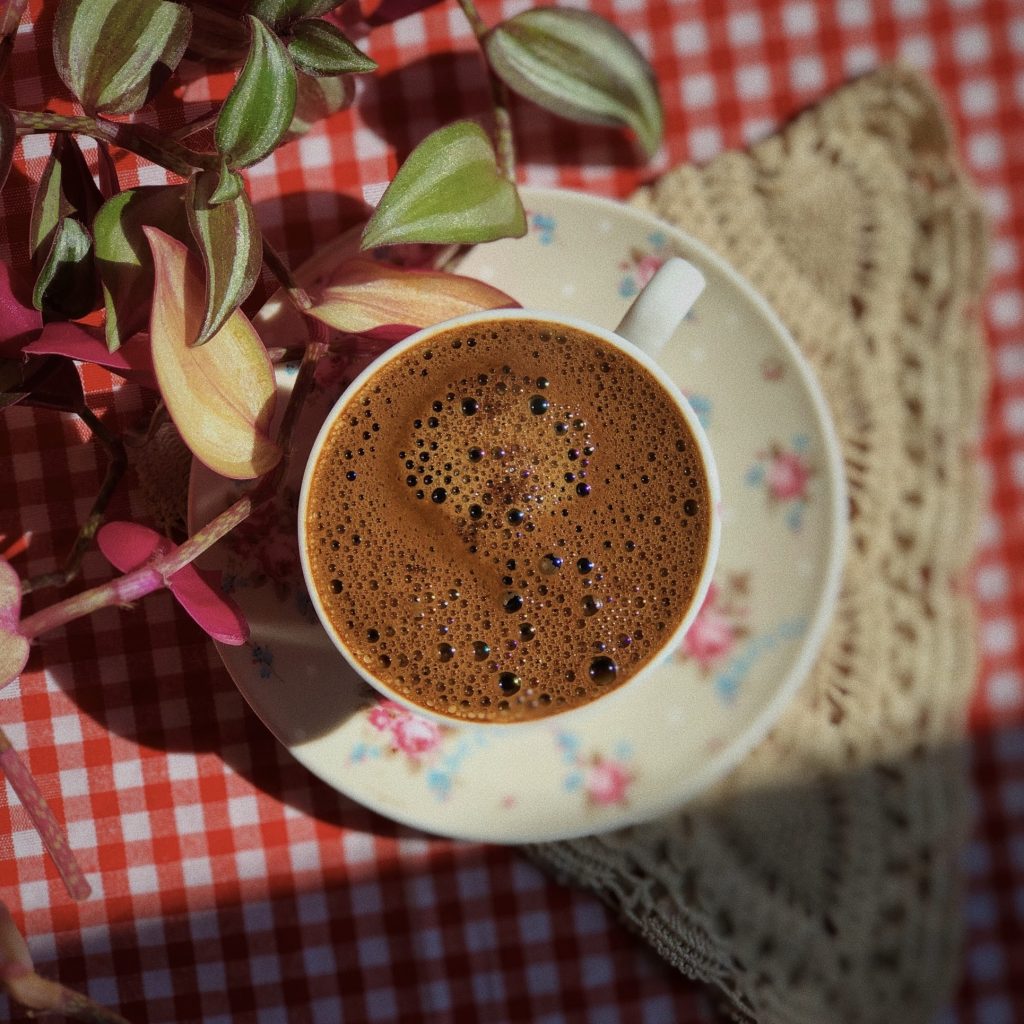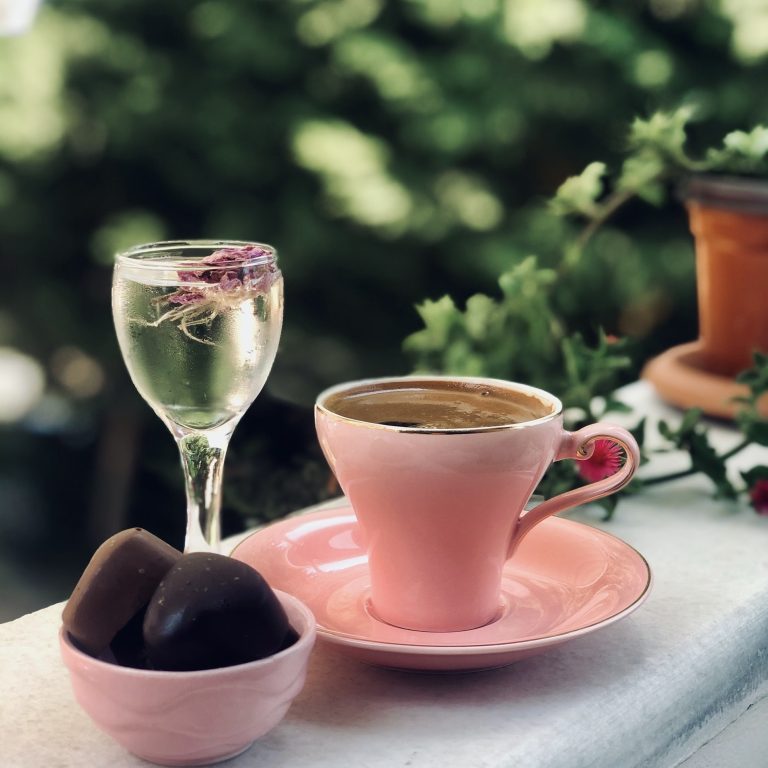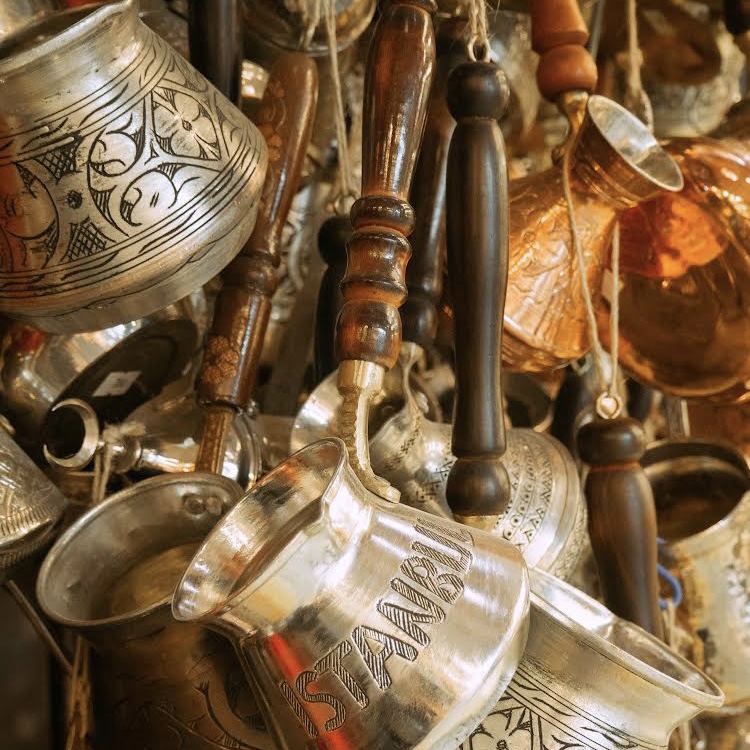Turkish coffee is a rich part of the coffee world. Each variety captivates people with its unique history and taste. From Milky Turkish Coffee to Gar Coffee, these varieties cater to every palate. In this article, we will explore the diversity of Turkish coffee. Each cup tells a story, and every sip is a blend of tradition and modernity. These coffees are not just beverages; they are symbols of culture, heritage, and shared memories. Are you ready to discover the magical world of Turkish coffee?Turkish coffee is a rich part of the coffee world. Each variety has its own unique history and taste. From Traditional Turkish Coffee to Gar Coffee, these varieties cater to every palate. In this article, we will explore the diversity of Turkish coffee. Each cup tells a story, and every sip is a blend of tradition and modernity. These coffees are not just beverages; they are symbols of culture, heritage, and shared memories. Are you ready to discover the magical world of Turkish coffee?
Traditional Turkish Coffee
Traditional Turkish coffee is an authentic and deeply rooted representation of Turkish coffee. It is unique with its grounds and frothy top. It offers an intense and aromatic taste, reflecting the historical and cultural depth of Turkish coffee. Each cup has been a part of a centuries-old tradition, making it the masterpiece of Turkish coffee.
Milky Turkish Coffee
A lighter version of Turkish coffee, Milky Turkish coffee is prepared by adding milk. This coffee has a softer taste compared to classic Turkish coffee. It can also be more frothy than traditional Turkish coffee.
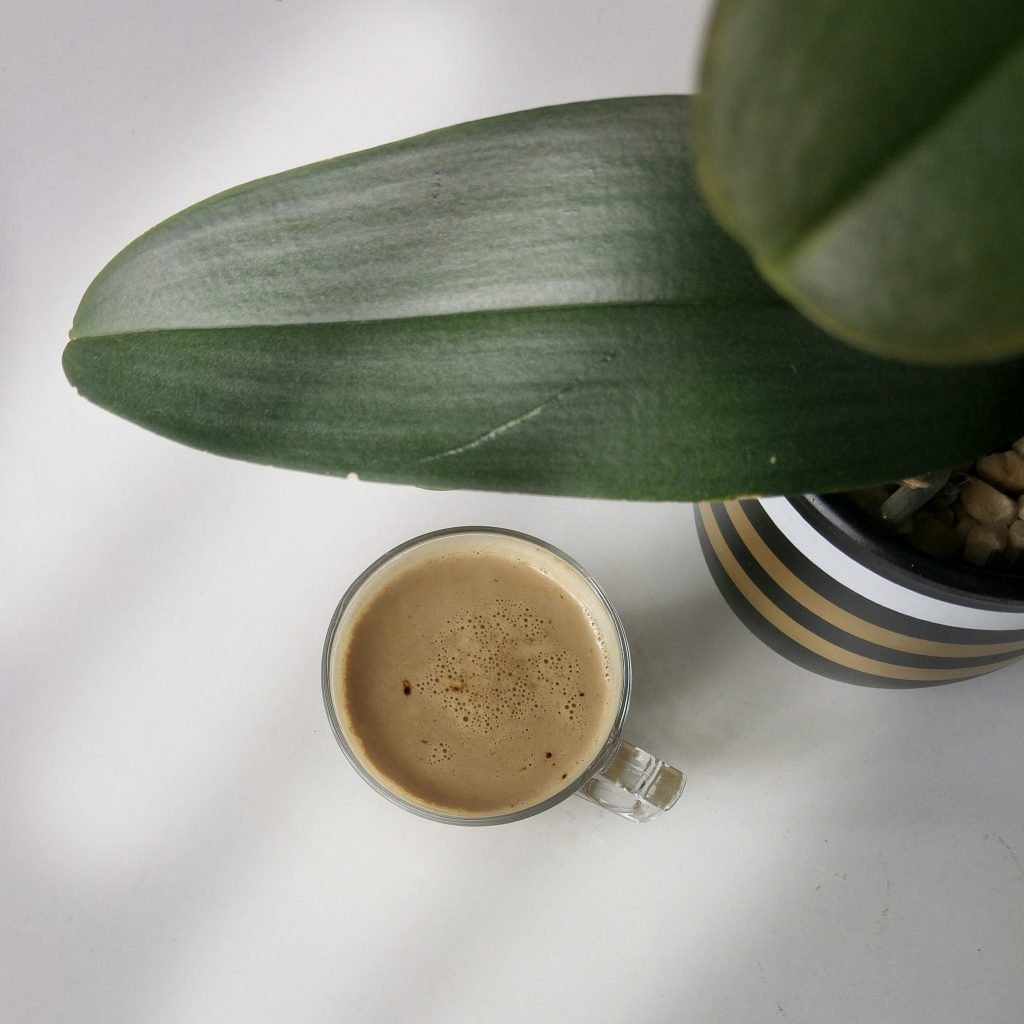
Menengiç Coffee
Menengiç coffee is not a traditional Turkish coffee variety, but it is quite popular in Turkey. It is made using the fruit of the menengiç tree. This fruit typically grows in regions like Siirt and Mardin. When the fruits turn from red to green, they are ground and used. Menengiç coffee is caffeine-free and offers a light and smooth taste. It can be prepared with both milk and water.

Dibek Coffee
Dibek coffee is prepared using a unique grinding method. Coffee beans are obtained by pounding them in mortar made of hollowed-out stone. This process brings out the oils in the coffee beans and results in larger particles in the coffee grounds compared to traditional Turkish coffee. Dibek coffee is characterized by its intense aromas. Traditionally made with only coffee, it is now prepared with the addition of various flavors.

Mırra Coffee
Mırra coffee is mainly consumed in the Southeast Anatolian region. Mırra is cooked in a special pot at low heat for a long time. This coffee is brewed several times and the process takes about 2 hours. The word “Mırra” means “bitter” in Arabic, which reflects the taste of this coffee.
Gar Coffee
Popular in Adana, Gar coffee is known for its double-roasted coffee beans. Coffee beans are roasted using special techniques, giving the coffee a more intense flavor with chocolate undertones. Due to its dark roast, it has a lower acidity level. It is served in tea glasses rather than traditional Turkish coffee cups. It is said to have similarities with Cavalry coffee.
Kervansaray Coffee
It is a type of coffee unique to Adıyaman. It includes Turkish coffee along with ingredients such as chocolate, mastic, menengiç, carob, and sahlep. While it has a smooth taste, it is richer and sweeter than traditional Turkish coffee. You can personalize it by adjusting the sugar amount and milk ratio to your taste.
Tatar Coffee
Consumed according to Crimean Tatar traditions, Tatar coffee is served before meals. It is presented in a small cup called “Tostakay.” The recipe involves adding two teaspoons of kaymak (clotted cream) on top of Turkish coffee, making for a smoother coffee experience. Sugar can be added optionally.
Cilveli Coffee
Originating from the Manisa region, Cilveli coffee is made using the same method as traditional Turkish coffee. However, its secret lies in the roasted nuts placed on top of the coffee. It is often served with doubly roasted and ground almonds. Pistachios or hazelnuts can also be added to create different flavors. A teaspoon is provided for eating the almonds that settle at the bottom, and some recipes include a blend of spicy powder on top of the almonds.
Tarsus Coffee
A traditional coffee variety consumed in the Aegean and Mediterranean regions, Tarsus coffee is served in thin-waisted glass cups. It is prepared similarly to classic Turkish coffee, but with less froth.
Coffee in the Sand
Unlike the traditional method of making Turkish coffee, this special version is brewed in hot sand. The heat conduction of the sand ensures even heating of every part of the coffee, altering its flavor. Coffee brewed in the sand has a more intense and distinct aroma.
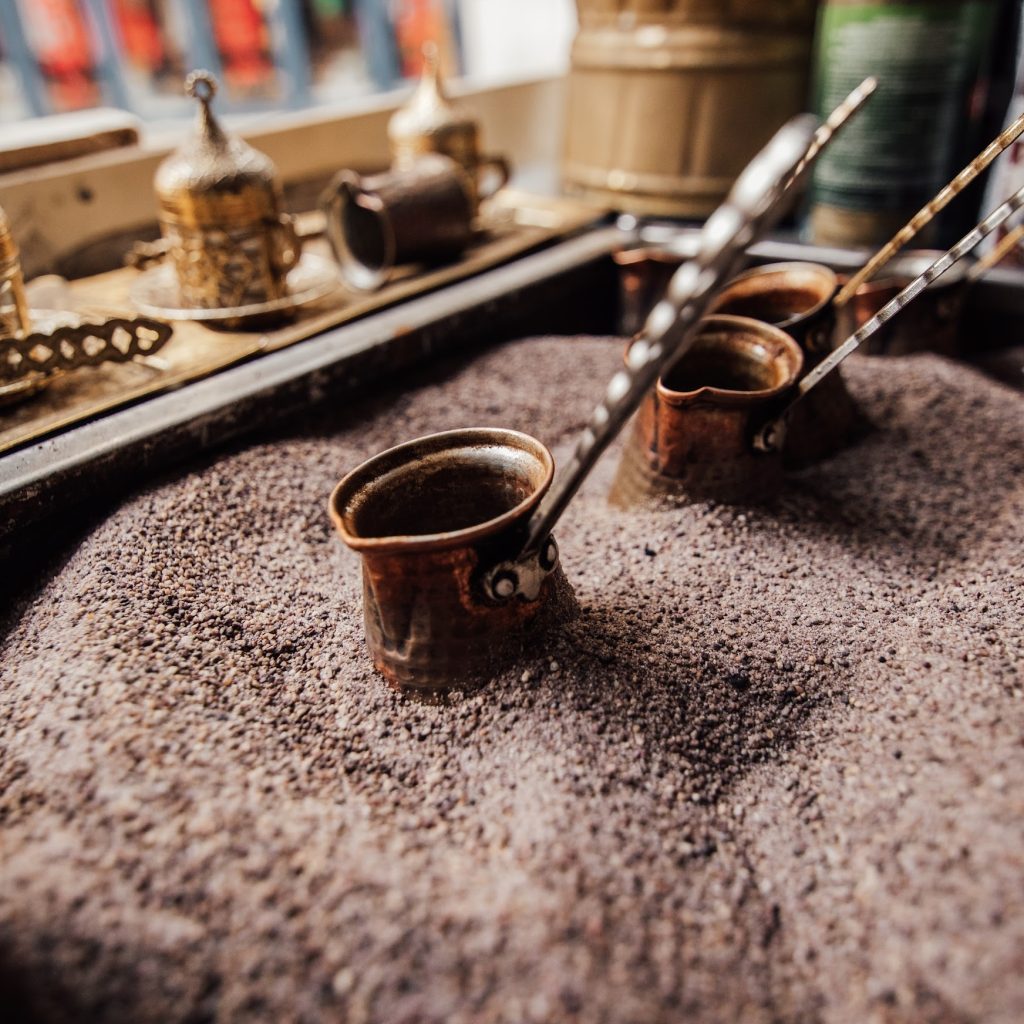
Devebatmaz Coffee
One of the frothy variations of Turkish coffee, Devebatmaz coffee is named after its brewing technique. When the coffee starts to boil, its foam is immediately poured into the cup, and the pot is put back on the fire. This process is repeated until the coffee in the pot is finished. The result is a coffee with rich foam and an aromatic taste.
